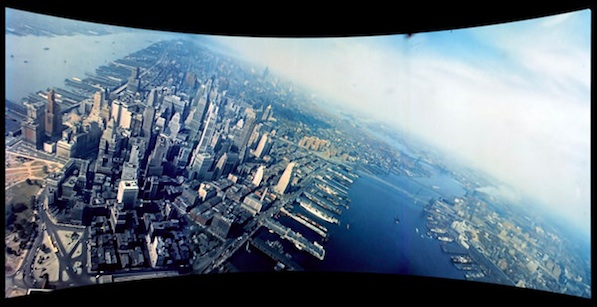What is Cinerama? Cinerama was the first widescreen film format. It was invented over sixty years ago, back when the movie industry was facing a crisis. Television was booming. The small screen was threatening the big screen. So the big screen had to get bigger.
In a sense, Cinerama wasn’t just a movie format, it was a strategy for business: the business of images. In 2013, websites like Fandor also have a strategy for the business of images—to bring great images right to your screen, through the internet. But most of these internet screens are small. So what does it mean to watch a big screen image on a small screen?
In theory, one could hook up their Fandor account to as big a screen as possible. For example, if you have access to a digital theater, you can watch it on a theatrical screen. But this is still not Cinerama. Because Cinerama is not just one image, but three images that required three projectors, combining them on one giant screen. And the Cinerama screen is not just a screen that is big, but a screen that curves. Its curves are designed to cover your entire field of vision, as if to embrace you and immerse you in its images. This made Cinerama truly unique among the widescreen images that we take for granted – so unique in fact, that it couldn’t stay in business. It simply required too much cost and effort to maintain.
David Strohmaier, who restored This Is Cinerama, respects the uniqueness of Cinerama enough that he tried to preserve its dimensions for the home video release, using a technique called the Smilebox. This is why the picture looks bent like a bow. The Smilebox is a two-dimensional representation of a three-dimensional experience. But this is not to be confused with the original experience. And looking at this image only reminds you of your distance from that experience.
This distance is useful for a historical appreciation of what Cinerama was. But does this mean we can only view Cinerama as a vision of the past? Or is it possible to bring the experience of Cinerama into our present? What was that original experience? Total immersion in the image. An image that embraces you, that totally absorbs you, so that you’re not merely just watching, but that you feel like you are part of the action, taking part in the image itself.
To watch an image like this on a small screen, one has to ask: how can the small screen let you feel that you are taking part in the image?
Kevin B. Lee is a filmmaker, critic, video essayist, and founding editor of Keyframe. He tweets as @alsolikelife.




